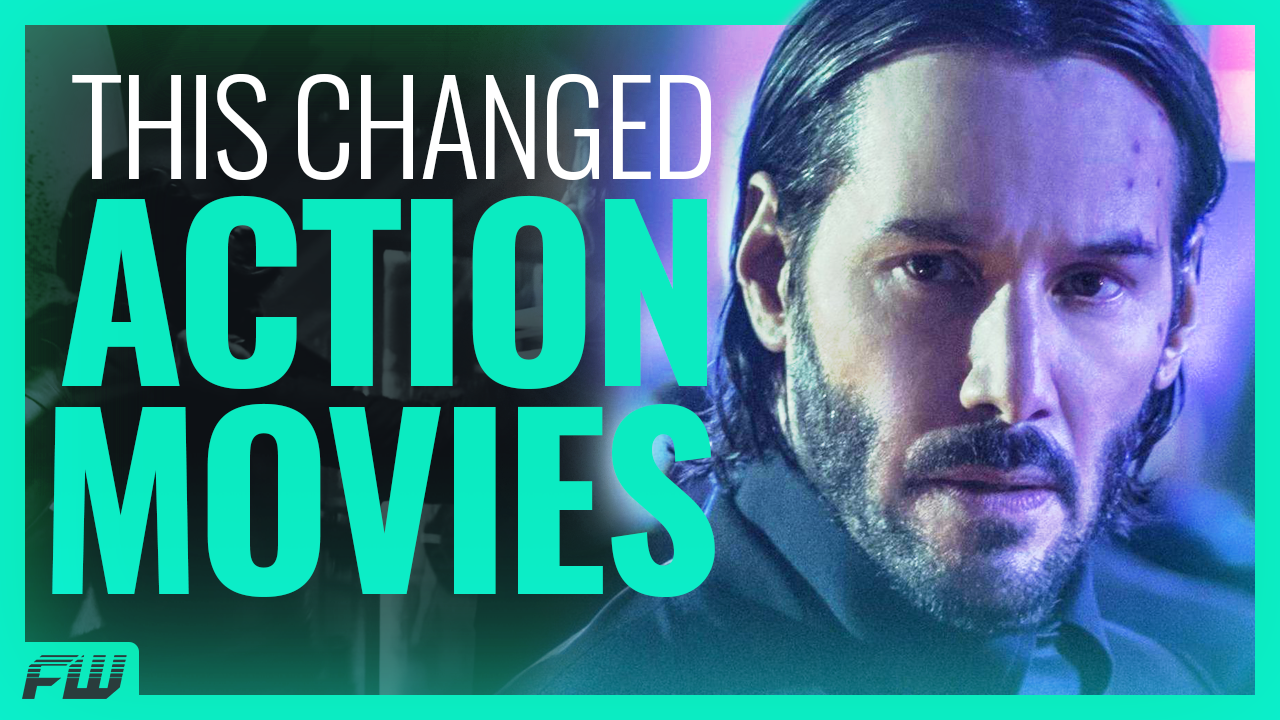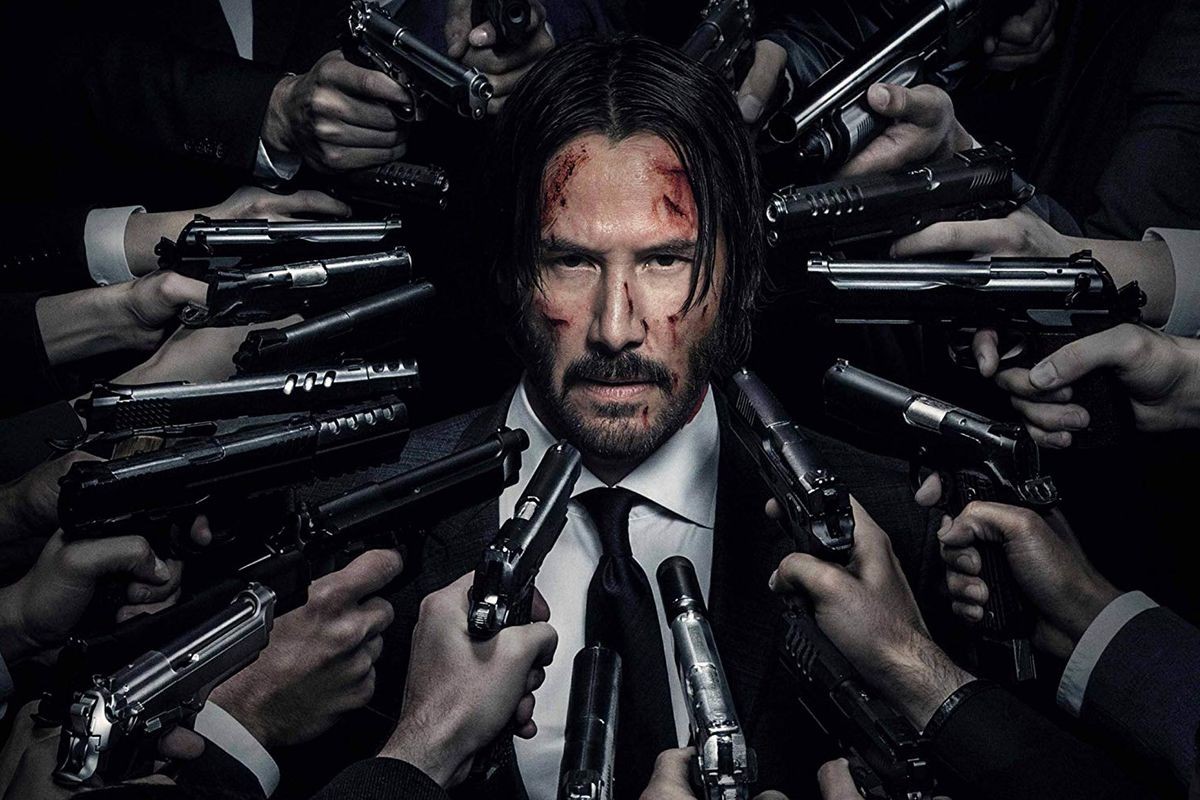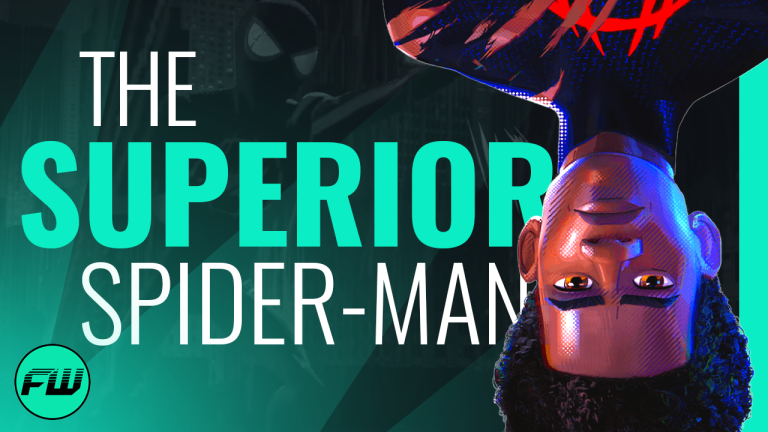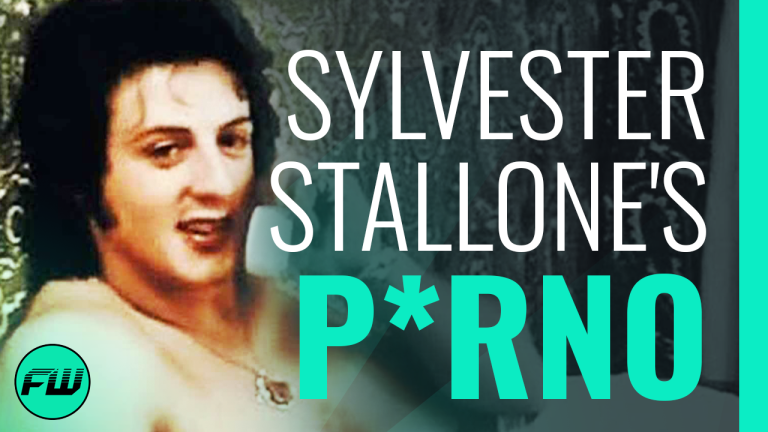In this FandomWire Video Essay, we explore how John Wick revolutionized action in movies.
Check out the video below:
Subscribe & hit the Notification Bell so you never miss a video!
How John Wick Changed Action Movies
John Wick is perhaps one of the most unlikely films ever turned into such a massive franchise. The first film was made for around $20-$30 million and was initially projected to make around $7 million on its opening weekend. However, once word got out that this wasn’t your average action flick, it exceeded expectations by making $14.4 million in its opening weekend and grossing $43 million domestically, with a worldwide total of $88.8 million.
It’s the type of mid-budget success that led to a sequel being greenlit only a few months later. However, the fandom that the film earned in the three years it took for Chapter 2 to reach the screen, thanks to a successful home video release, was massive. As a result, Chapter 2 would gross $92 million in the United States against a $40 million budget, and Chapter 3 in 2019 would make $171 million domestically on a $75 million budget.
It’s hard to deny the influence that the John Wick franchise has had on the action genre, as there have been many would-be “copycats” that have come out in the past few years — some of which are good, and others that aren’t. Of course, there are the films by co-director David Leitch — Atomic Blonde and Bullet Train — that share a similar style. But other filmmakers have tried to go for the same tone to mixed success with films like Gunpowder Milkshake, Nobody, The Gray Man, and more.
This series also led to the revitalization of Keanu Reeves’s career. Reeves was once one of the highest-paid actors in Hollywood, having received a historically massive payday for the two Matrix sequels. However, in the late 2000s and early 2010s, he starred in a string of duds and mid-budget action thrillers that didn’t do him any favors. The goodwill towards John Wick is responsible for a “Keanu-ssance” that allowed films like Bill and Ted Face the Music and The Matrix Resurrections to be made.
But what is it that made the John Wick franchise so successful? What makes this action franchise a sure bet at the box office? While it was a perfect storm of factors that led to the original film’s success back in 2014, it’s the franchise’s uniquely artistic style of filming and choreographing action sequences that allow it to stand above the competition. R-rated action fare typically wasn’t very well received in the early 2010s. Audiences went into John Wick thinking they were going to get another gritty action film, only to be pleasantly surprised by the more maximalist nature of the filmmaking. At the time, there weren’t many other movies that did action the way John Wick did.
A lot of that is thanks to director Chad Stahleski and his extensive career as a Hollywood stuntman. While most filmmakers specialize in one or two different styles of action, Stahleski has experience working with several different combat styles. As such, the action in the John Wick films never takes one form, being much more diverse in nature than other action films.
Most of the combat in the franchise — particularly as we get into the second and third films — is part of a genre known as “gun fu.” A mix of martial arts and modern weaponry, this style of action is exciting because it taps into our nostalgia for classic action cinema — like Wuxia films and Hong Kong action cinema — while offering the raised stakes characteristic of modern action outings.
The John Wick films thrive with this unique blend of old and new; however, even the best action sequences can fall flat if the cinematography and filming style don’t complement the movements of the combat. Stahleski’s understanding of stunts and on-screen action don’t only allow him to create breathtaking choreography but allow him to know what looks good on camera and how that translates to the screen. Shootouts are directed and choreographed in a way that is kinetic, exciting, and engaging.
And even when there are no weapons involved, and the combat is merely hand-to-hand, the action is virtually unparalleled in its success. These sequences are expertly shot in a way that perfectly balances the grittiness of a down-and-dirty brawl with the elegance of the films that inspired it. Stahleski ensures every punch counts.
It’s a daunting and difficult task for ANY performer to believably pull off the intense action required in a John Wick film. Which makes Keanu Reeves’ portrayal all the more impressive. According to one producer for the franchise, Keanu performs 90% of his own stunts. This allows the camera to remain up close to the action, never attempting to hide a body double or stunt person, adding to the film’s realistic depiction of over-the-top sequences. It’s Reeves’ dedication to perfecting the role that brings John Wick to life. According to an article in Men’s Journal, Reeves spends days on the gun range training with Navy Seals prior to filming, in order to master control of the weapons utilized on screen. And that comfortability shines through by allowing Wick to move with a fluid intensity you’d expect from the world’s deadliest assassin.
If you’re enjoying the content, be sure to give us a like, and don’t forget to subscribe and hit the notification bell so you never miss a video.
Audiences don’t have to believe that John Wick is real. The series is filled with sensationalized absurdity that takes it out of the real world. But they have to believe that it’s real within the world created in the films, and that is primarily accomplished through Reeves’ putting his body to the test and committing to the stunts himself. Physical trainer Patrick Murphy, the man responsible for getting Reeves in shape for John Wick said, “John Wick needs crazy endurance, a powerful core, and grip strength. I spent a lot of time dreaming up different combinations and pairings of exercises.”
The series also features memorable set pieces acting as backdrops to highlight the onscreen ballet of violence, particularly thanks to the bigger budget of the two sequels. The third film, in particular, features some absolutely out-there action sequences that Stahleski nonetheless manages to pull off, like a motorcycle chase and a horseback-based action scene. The common thread of all these qualities is their precise choreography and execution.
Then, of course, there is the world-building of the franchise. Fans fell in love with this alternate present-day New York City, home to a secret society of assassins. The Continental Hotel was a simple but unique concept that offered plenty of room for expansion — and expand they did, as the sequels would go even further into this lore.
One of the most exciting things about the John Wick franchise is that — because Reeves’ assassin tends not to leave his opponents alive — we get new villains with each movie. As the franchise has grown, more and more legends of the action genre want their chance to star in the series, either as an ally or foe of the hitman. And as more actors come into the fold, the combat styles adjust to reflect their unique strengths.
The first film’s main villain is the late Michael Nyqvist, who plays a Russian mobster — the father of the ne’er-do-well who killed Wick’s dog and essentially launched the entire franchise’s series of events into action. Viggo Tarasov is the most conventional antagonist Wick has faced, but he was also his first big opponent. Remember, John Wick was initially conceived as a pretty straightforward revenge thriller. It was only when fans embraced the character and insane world-building that it turned into something so much more.
Chapter 2 is where we began to see the John Wick series realize its full potential when we would have multiple adversaries for Reeves to battle. Although the primary antagonist of the second film is another person who is more of a figurehead than an actual fighting force, it also gave us a slew of secondary antagonists who are enormously fun to watch.
For example, John Wick: Chapter 2 features the best performance Australian actress Ruby Rose has ever given. Although Rose might not be known for being a strong actress, this role gave her exactly what she needed to shine. In other words, it has plenty of ambitious, acrobatic fight choreography with almost no dialogue. Compared to the predominantly “shoot-’em-up” style of the first movie, it’s fun to see how the choreography evolved into something much more dance-like for the next entry.
Chapter 2 also features Common as one of Reeves’s foes, and this was an interesting choice, as it allowed John Wick to meet his match. For much of the early 2010s, Common and Reeves were cut from a similar cloth. Both starred in a handful of mid-budget theatrical action flicks — even sharing the screen once before in 2008’s Street Kings. As such, their combat styles provided a nice mirror, whereas many other antagonists fight in an entirely different way from our hero.
If the second film was the franchise stepping up its game, the third — entitled Parabellum, which literally translates to “Prepare for War” — was the series going full throttle into the wild. And this film’s main antagonist comes from a rather unlikely origin: terrible action movies from the ‘90s.
No one would look back at the early filmography of Mark Dacascos and say he starred in anything resembling a masterpiece. And yet, many people hold a special place in their heart for the campy, almost-so-bad-it’s-good qualities of his most famous movies like Double Dragon.
While Dacascos’s acting might not have been all that great in the ‘90s, he showed he knew how to handle intense action choreography — and that is exactly what a role as a John Wick villain calls for. Nobody comes to these movies caring about the dialogue. They want to see larger-than-life villains and action stunt choreography virtually unparalleled by anything else in the genre. Dacascos has the skill set needed to make this work.
Parabellum also represented the first time the franchise would attract A-list Hollywood royalty talent. Playing an ally fighting alongside Reeves rather than against him, the third John Wick film represented Halle Berry’s glorious return to the action genre. She’d been a Bond girl in Die Another Day, and Catwoman in the 2004 film most people would probably rather forget about, so we knew that she had the chops to do something amazing here.
The end result did not disappoint, creating an action sequence that is one of the best the series has had to offer so far. Her addition to the cast meant the creation of a scene that blends hand-to-hand combat with gunplay and the use of canines as a weapon in a way we’ve never experienced before.
Stahleski knows how to play into the strengths of each member of his ensemble, and this is a perfect example of how he does that. With Chapter 4 coming up, we’ll see even more legends of action cinema join the ranks of the John Wick universe. The film will introduce characters played by Scott Adkins and iconic martial artist Donnie Yen, who will both add their own unique spin to the fight sequences.
In addition to the new movie hitting theaters, there are several spin-offs in the works — like the female-led Ballerina, set to star Ana de Armas, and the television series The Continental, which will be led by Mel Gibson. These new expansions, along with any potential sequels in the main franchise, will allow the world to grow even deeper and go in even more exciting new directions.
Many fans have hailed the John Wick franchise as some of the best action movies ever made, and we tend to agree with that assessment. From taking advantage of Keanu Reeves’s unique talents to memorable villains and some of the best action choreography the genre has to offer, these films are not only tremendously fun but also proof of the beauty that can be found in this genre that has earned an unfairly generalized bad reputation.
What do you think? Are the John Wick movies the peak of the action genre, or is there another movie you think deserves that title? And who would you like to see added to the franchise to bring their unique approach to action to the series? Let us know in the comments below, and be sure to like and subscribe. As always, thanks for watching! Until next time!
Follow us for more entertainment coverage on Facebook, Twitter, Instagram, and YouTube.
Note: If you purchase an independent product featured on our site(s), we may earn a small commission from the retailer. Thank you for your support.





![Moon Knight Theory: Marc's Psychopath Third Persona Killed [SPOILER]](https://staging.fandomwire.com/wp-content/uploads/2022/04/Layla-Marc-Spector-Scotty-Jake-Lockley-768x403.jpg)






